Chaenactis stevioides, Esteve’s Pincushion
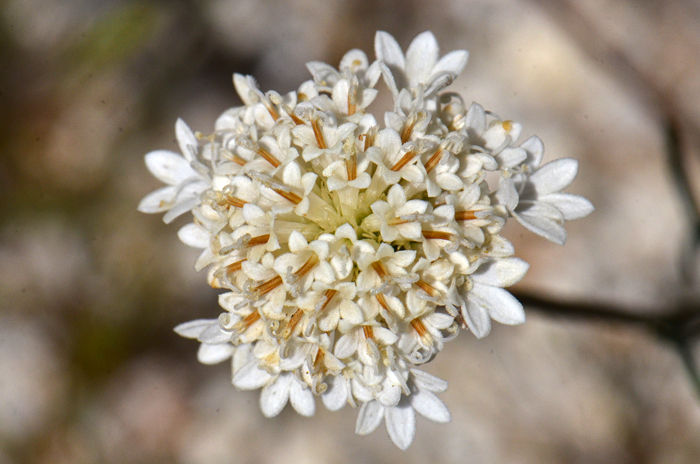
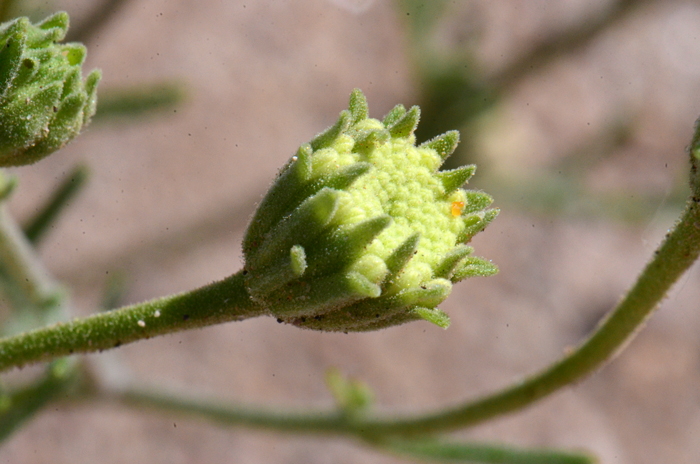
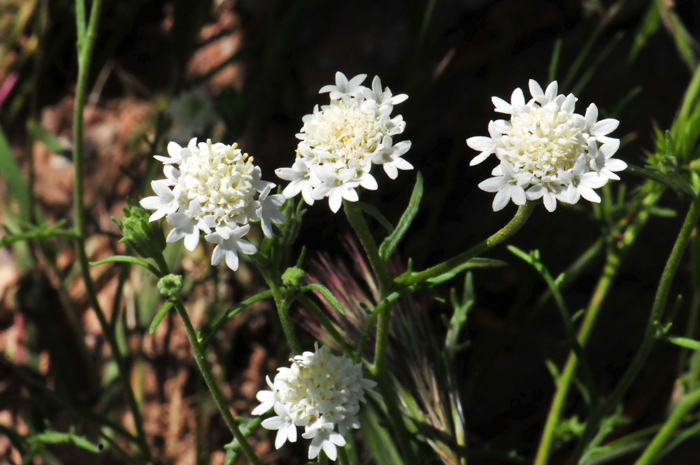
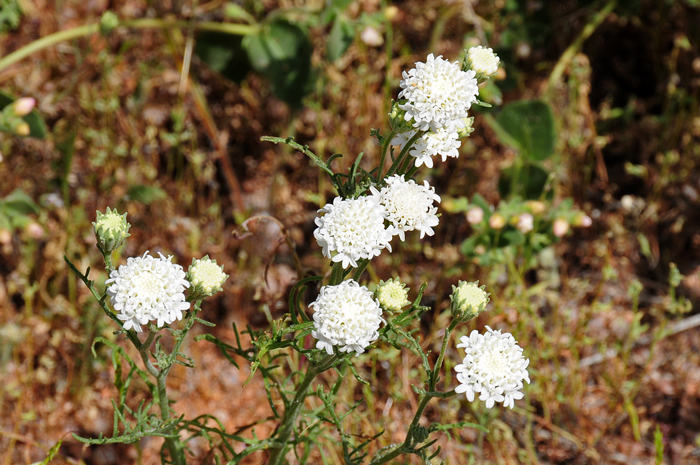
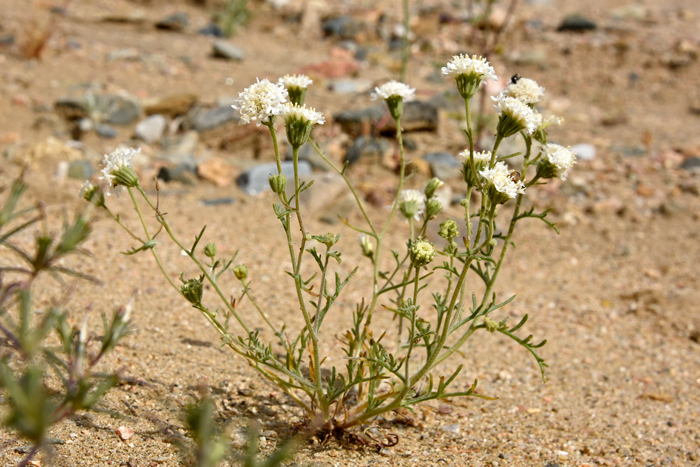
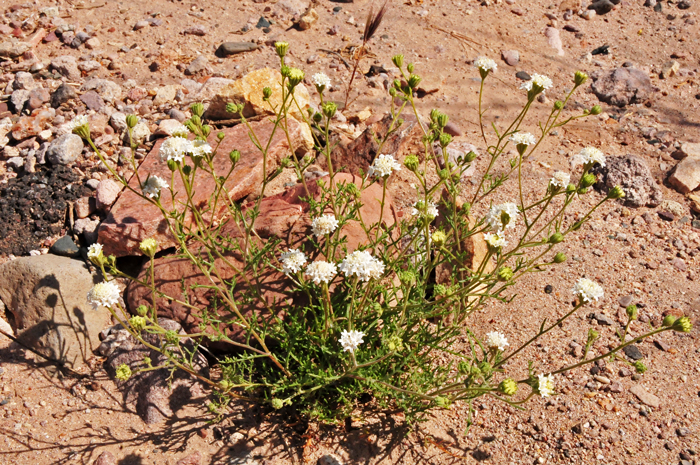
Scientific Name: Chaenactis stevioides
Common Name: Esteve’s Pincushion
Also Called: Desert Pincushion, Pincushion Flower, Steve's Dusty Maiden, Steve's Dustymaiden, Steve's Pincushion
Family: Asteraceae, Sunflower Family
Synonyms: (Chaenactis gillespiei, Chaenactis latifolia, Chaenactis mexicana, Chaenactis stevioides var. brachypappa, Chaenactis stevioides var. thornberi)
Status: Native
Duration: Annual
Size: Up to 16 inches (40 cm) or less.
Growth Form: Forb/herb; erect, one or up to 12 stems, open airy branches, multiple blue-green or purplish stems; thin cobwebby, silky hairs, older plants glabrous.
Leaves: Green or gray-green; thin or slender; alternate concentrated on lower stems; basal leaves withering; cauline leaves pinnatifid or bi-pinnatifid, lobes linear, elliptical or obtuse, with 4 to 8 pairs of primary lobes.
Flower Color: White, pinkish-white, cream or yellow floral heads; some in light shades of yellow, heads mostly discoid florets; several heads on 4 inch (10 cm) stalks; fruit is a cypsela and often mistaken as an achene.
Flowering Season: February to May or June.
Elevation: 100 to 6,500 feet (30 -1,800 m).
Habitat Preferences: Lower and upper deserts, arid habitats, openings in chaparral, pinyon-juniper, mesas, plains, sandy, gravelly and rocky slopes and washes.
Recorded Range: Found primarily in the west central and southwestern United States (AZ, CA, CO, ID, NM, NV, NY, OR, UT, WY,); Baja California and northwest Mexico (Sonora). This species occurs throughout most of Arizona. A record from New York is likely a cultivated escapee.
North America & US County Distribution Map for Chaenactis stevioides.
North America species range map for Chaenactis stevioides:
North American range map courtesy of Virginia Tech, Dept. of Forest Resources & Environmental Conservation
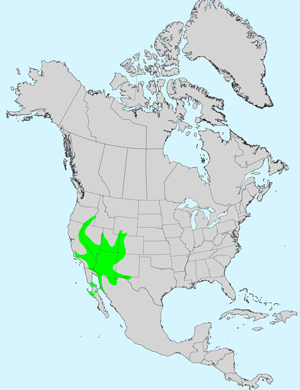
U.S. Weed Information: Unknown
Invasive/Noxious Weed Information: Unknown
Wetland Indicator: Unknown
Threatened/Endangered Information: Unknown
Genus Information: In North America there are 17 species and 17 accepted taxa overall for Chaenactis. Worldwide, The Plant List includes 19 accepted species names and a further 55 scientific names of infraspecific rank for Chaenactis.
Members of Chaenactis are commonly referred to as “pincushions” or “dustymaidens”.The genus Chaenactis was published in 1836 by Augustin Pyramus de Candolle.
In the Southwestern United States: Arizona has 6 species of genus, California has 13 species, Nevada has 8 species, New Mexico has 3 species, Texas has 0 species, Utah has 5 species. All data approximate and subject to revision.
Comments: Esteve’s Pincushion is a common early spring bloomer heavily populated in the Sonoran and Mojave Deserts and northward into the Great Basin Desert. It is well represented throughout Arizona.
In Southwest Desert Flora also see: Fleshcolor Pincushion, Chaenactis xantiana and Pebble Pincushion and Chaenactis carphoclinia var. carphoclinia.
The genus Chaenactis was published in 1836 by Augustin Pyramus de Candolle.
The species epithet stevioides (Ste'via/stevio'ides:) is named in honor of the Spanish botanist, physician and humanist Pedro Jaime Esteve (1,500-1,556).
See ethno-botanical uses at Native American Ethnobotany, University of Michigan, Dearborn.

